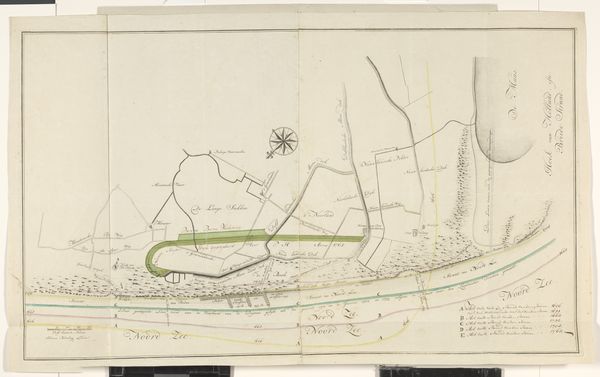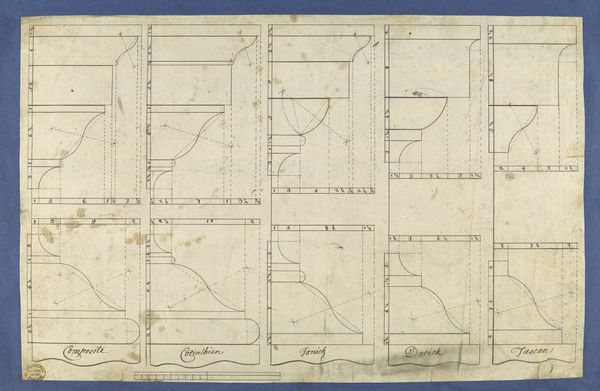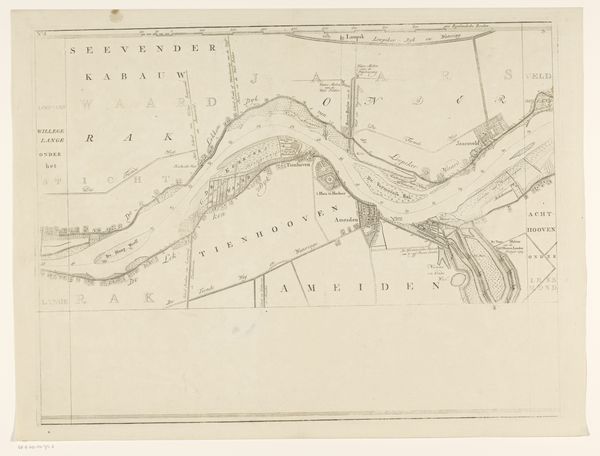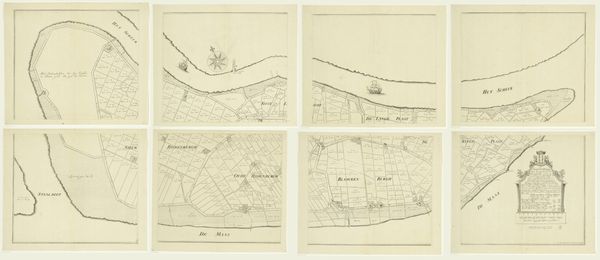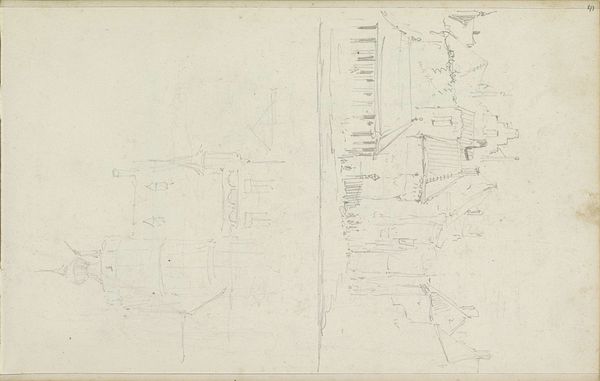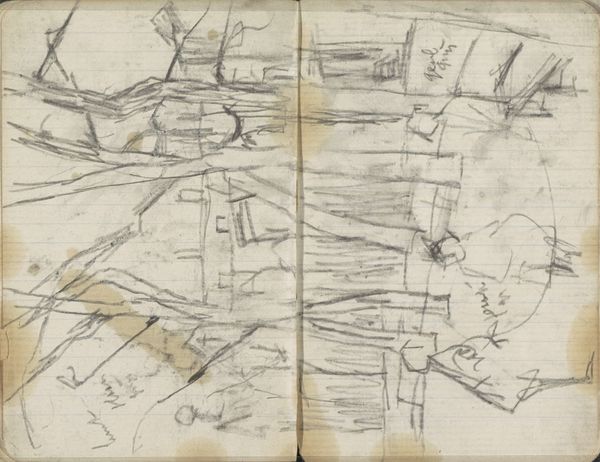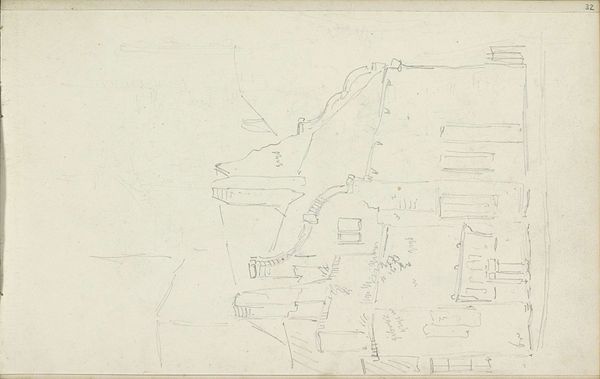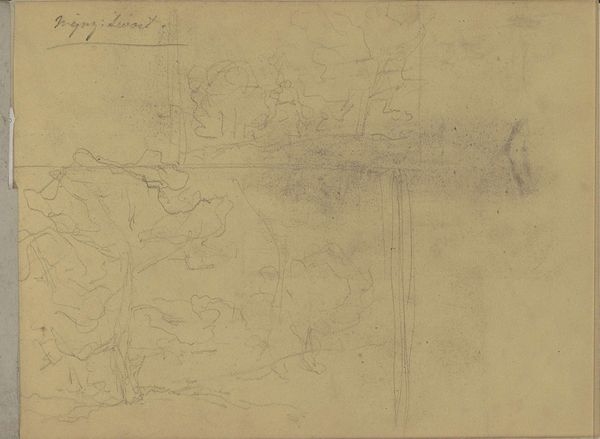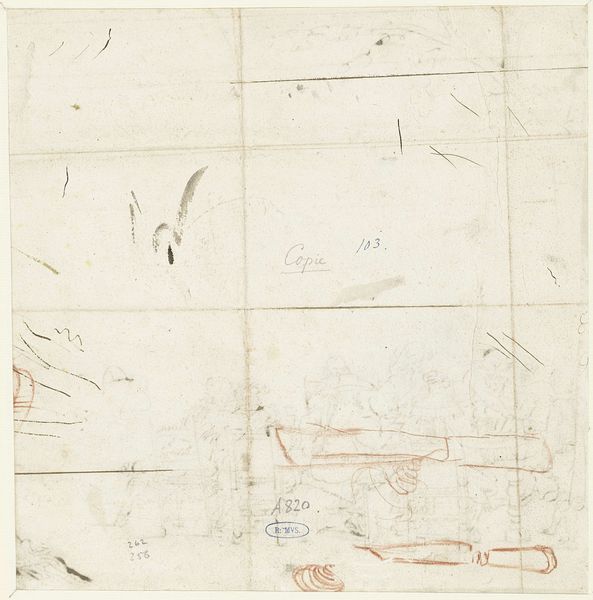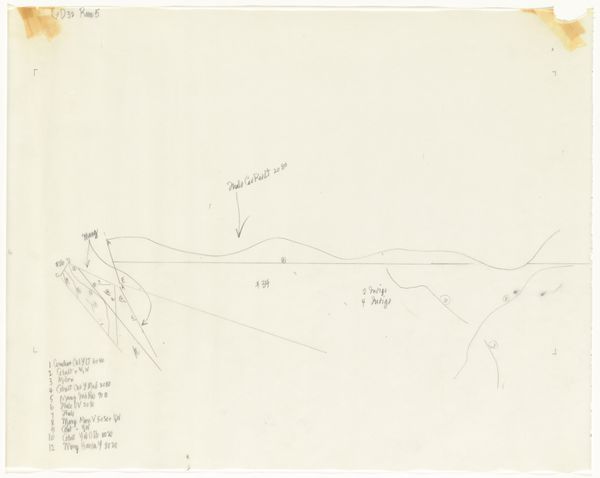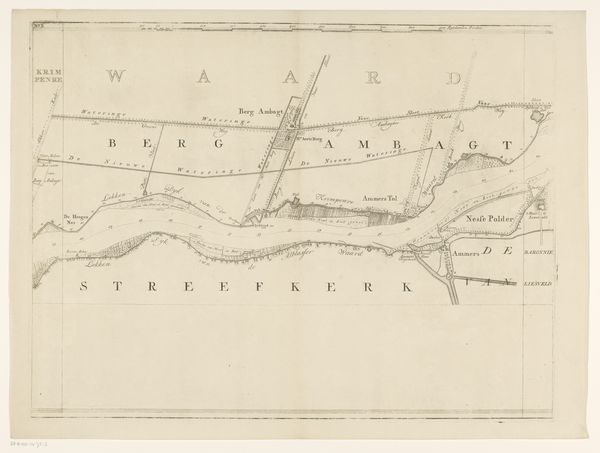
Plankaart voor de aanleg van een trekvaart tussen Leiden en Haarlem, juli 1640 1640 - 1647
0:00
0:00
drawing, paper, ink, pencil
#
architectural sketch
#
drawing
#
dutch-golden-age
#
landscape
#
etching
#
paper
#
ink
#
pencil
#
architecture drawing
#
cityscape
Dimensions: height 303 mm, width 1123 mm
Copyright: Rijks Museum: Open Domain
Curator: Immediately, there's an appealing simplicity and austerity to the drawing; a sense of cool functionality in the presentation of information. Editor: This is a “Plankaart voor de aanleg van een trekvaart tussen Leiden en Haarlem” by Hendrick Symonsz. Duijndam, created sometime between 1640 and 1647. It’s a pencil and ink drawing on paper, an architectural sketch really. Curator: The line work itself has a beauty. Consider the labor and the skill embedded in translating the physical landscape onto a working document like this. How much time was invested here to turn it into something useful, an implement of social transformation? Editor: It’s true, the materiality gives insight to how information was translated back then, a hand-drawn effort to move goods and people—essential in the Golden Age. Look how each marking on the paper carefully details canals and plots. See how the artist plays with perspective even within a functional drawing, creating an experience for the eye to understand depth and direction. Curator: It's not just depth, but distance being charted for efficiency. These canals didn't spring up by magic; immense human effort reshaped the landscape, all stemming from drawings just like this. You can visualize the consumption, distribution networks relying on infrastructure meticulously planned on paper. This also marks the beginnings of organized transportation on a large scale. Editor: Absolutely, but note the integration of landscape art into practical use. See how the etching’s composition allows for easy reading and how effectively ink highlights particular details without being cluttered. There’s precision but there is an art to it, using subtle variations of line thickness for both functionality and aesthetic depth. It has this quality about the flow of things. Curator: Exactly! Its impact goes beyond mere design; it shows human potential to mold their surroundings—the physical manifestations of intent driven by market needs and movement. Editor: By applying formal principles, we’re getting at understanding art's purpose both aesthetically and structurally... The artwork serves to document a specific feat, but it’s more of that as an early urban plan. Curator: Understanding those roots grounds us when examining later artistic or even political expression. A foundation really—visible progress drawn.
Comments
No comments
Be the first to comment and join the conversation on the ultimate creative platform.

